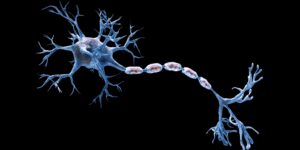Madan S, Puri I, Nagpal N. Guillain-Barré Syndrome (GBS) mimicking diabetic ketoacidosis (DKA) with dyselectrolytemia. Series Endo Diab Met. 2025;7(3):1-3.
Diabetic ketoacidosis (DKA) is a serious complication of diabetes characterized by high blood sugar, acidic pH levels, and increased ketone levels in the body, mostly observed in individuals with type 1 diabetes mellitus (T1DM) but can rarely occur in those with type 2 diabetes mellitus (T2DM). It is commonly triggered by factors like infection, new-onset diabetes, or non-compliance with treatment [1]. The most frequent cause of sudden flaccid paralysis is Guillain-Barré syndrome (GBS). It is due to an autoimmune reaction that destroys peripheral nervous system nerves, resulting in symptoms including tingling, weakness, and numbness that can eventually become paralysis [2].
Case Presentation: We report a case of a 14-year-old female with T1DM admitted with altered sensorium and vomiting. On evaluation, it was found to be DKA. The patient was managed according to the ISPAD guidelines for DKA, with hypotonic fluids, potassium chloride, and phosphorus replacement. After 24 h of treatment, DKA recovered, and the patient regained consciousness, but she still had weakness, was unable to sit without support, and had difficulty swallowing. Clinical examination showed muscle tone was decreased, power at the hip was 2/5, at the knee and ankle was 3/5, and at the shoulder and elbow was also 3/5. The neurologist's opinion was taken, cerebrospinal fluid (CSF) was normal, and the nerve conduction velocity showed axonal and segmental demyelination; GBS was diagnosed.
Conclusion: Persistent weakness and dysphagia after DKA recovery and electrolytes are normalized, one should then suspect GBS. In early-onset GBS, CSF can be normal.

